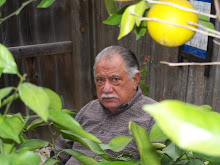( A l g a r o b i u s p r o s o p i s a n d N e l t u m i u s a r i z o n e n s i s )
A natural enemy of MESQUITE (Prosopis species) in South Africa
11 D O S S I E R S O N B I O L O G I C A L C O N T R O L A G E N T S A V A I L A B L E T O A I D A L I E N P L A N T C O N T R O L
Description
These are small beetles (up to 5Êmm in length). Algarobius is a uniform
fawn colour with elytra (hardened fore wings) that are darker than
the rest of the body. Neltumius has a mottled black and white
patchwork pattern over its entire body. The beetles are distinctive
because the abdomen extends beyond the elytra. Their presence is
easily noticeable by the occurrence of neat round holes in the
mature seed pods of prosopis, both on the trees and on the ground.
Life Cycle
Grubs of both species develop in mature seeds within mesquite seed
pods. Eggs of Neltumius are glued singly on the surface of the pods
and shells may remain in place for several months after the eggs have
hatched. Algarobius eggs are laid in cracks and blemishes on the seed
pods. Each grub enters and entirely destroys a single mesquite seed
during its development. Pupation occurs within the hollowed out seed
and adults emerge through distinctive holes on the surface of the pods.
Feeding Damage
Only the seeds of mesquite within the seed pods are damaged by the
beetles. The seed pods and vegetative parts of the plants are not affected.
Impact on Mesquite
Although up to 95% of seeds produced by mesquite can be destroyed
by these seed-beetles, they are probably having very little impact
on the dynamics of mesquite invasions because seed pods are eaten
by livestock and game before the beetles can utilise and destroy
many of the seeds. As a result seed destruction by the beetles seldom
reaches very high levels. Most seeds are ingested and pass through
the gut of animals undamaged. Once dispersed in the veld, seeds
are no longer suitable as a food source for the beetles.
A u t h o r : J . H . H O F F M A N N , Z o o l o g y D e p a r t m e n t , U n i v e r s i t y o f C a p e Town, Rondebosch 7701
Patron in Chief:
Nelson Mandela
THE WORKING FOR WATER PROGRAMME
ARC LNG
DESIGNED BY 021 8524623










No comments:
Post a Comment